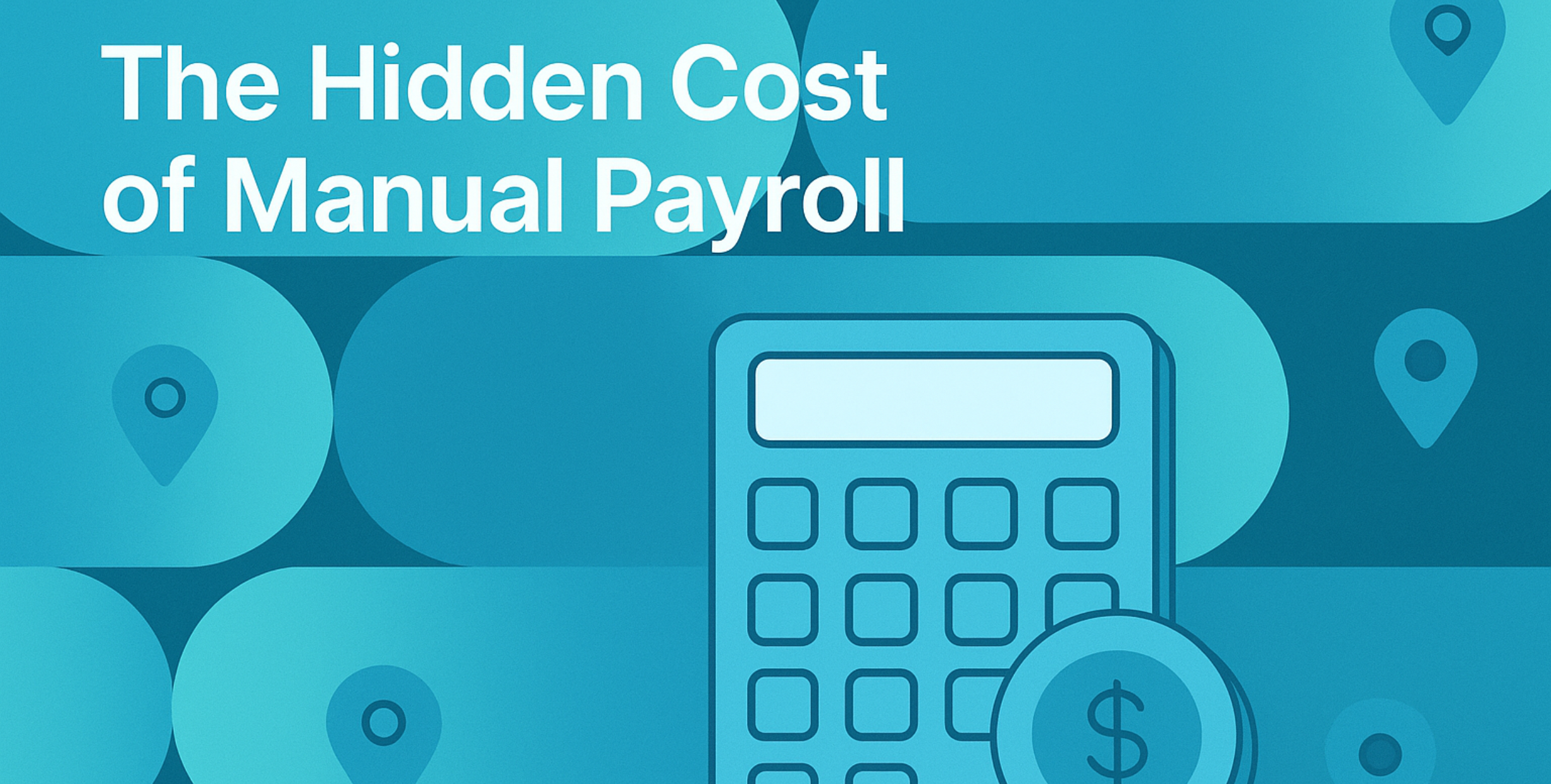The Hidden Cost of Manual Payroll
Processing payroll manually may seem like a cost saver, but for many companies, it actually gets expensive fast.

Summary: Manual payroll may look cheaper, but it quickly becomes a time sink and risk magnet, with hours lost each month, error-prone calculations, missed filings, and shaky security from spreadsheets and email. As headcount and locations grow, the follow-up from mistakes (and the hit to employee trust) compounds, while changing location-specific tax rules make compliance harder to manage by hand. Modern automation fixes this: accurate calculations, real-time regulatory updates, integrations with time tracking and accounting, and clear audit trails. Plane brings that automation globally — with built-in tax updates and support for employees and contractors in 100+ countries — so you can scale without the admin drag.Payroll should be simple. But for many companies, especially lean or early-stage teams, managing it manually becomes a quiet drain on time, accuracy, and growth. Manual payroll might feel like a way to save money. But once you factor in the time loss, compliance risks, security issues, and employee impact, it becomes clear that it is costing more than it saves.Switching to a proper payroll system is not just about convenience. It is about protecting your people, your time, and your business as a wholeHere’s what manual payroll really costs you.
What manual payroll looks like
Manual payroll usually means spreadsheets, calculators, tedious data entry, time-consuming reviews, and frequent one-off payments. It involves tracking hours, calculating wages and taxes, and handling payments without automation.In the early days it can feel manageable. But as headcount grows or regulations shift, the process gets harder to manage and easier to break.Why companies stick with it
Some teams start with manual payroll to avoid software costs or keep control of sensitive information. On paper it may make sense, but in reality it creates friction.Payroll complexity increases with every new hire, every location, and every policy update. What starts as a quick task becomes a recurring time sink with serious consequences if something goes wrong.Time is the biggest hidden cost
Manual payroll takes time away from high-impact work. For a founder or business owner, it could mean 10 to 15 hours every month just managing payroll. That time could be used for hiring, sales, product, or anything that actually moves the business forward.For teams in charge of payroll, it becomes a recurring distraction that slows down everything else.Manual systems don’t just take time. They create stress. Pay periods become high-pressure windows where mistakes are common and everything else takes a back seat.Small errors can lead to big problems
Errors create even more follow-up. Teams spend time explaining pay discrepancies, correcting numbers, and trying to rebuild trust with employees. It becomes a cycle that affects morale and output across the board.A missed tax rate. Incorrect hours. A forgotten deduction. These mistakes can lead to overpayment, underpayment, or missed filings. That is where manual payroll turns from a nuisance into a risk.Paying people accurately and on time should be a given. But with manual payroll, mistakes happen. When they do, it affects how people feel about the company.Late payments or incorrect paychecks chip away at trust. Employees who don’t trust payroll are less likely to stay engaged or stay at all. And when people leave, recruiting and training new ones is a cost nobody wants.Compliance is non-negotiable
Compliance issues can result in fines or trigger audits. They also distract leadership and create unnecessary risk exposure for the business.Manual payroll puts pressure on internal teams to stay on top of constantly changing regulations. Filing deadlines, labor laws, and tax rules all evolve. Missing one detail can lead to penalties or legal trouble.Automated systems handle these updates in real time. Manual ones rely on people catching every single change. That is not a sustainable approach as the company grows.Manual payroll isn’t secure
Payroll data is sensitive. It includes banking information, personal identification, and compensation details. Spreadsheets and email are not secure ways to handle that.Without encryption, access controls, and audit trails, your payroll process is exposed. Whether it is internal misuse or external attacks, the risks are too high to ignore.Why automation is the smarter move
Modern payroll systems take care of the heavy lifting. They calculate everything accurately, apply compliance updates automatically, and generate records that make compliance easy.They integrate with time tracking and accounting tools. They reduce errors and save hours of work. Most importantly, they let teams focus on what actually matters instead of getting bogged down in admin.How Plane can help
Plane was built to eliminate the overhead of global payroll and compliance. With automated workflows, built-in tax updates, and support for employees and contractors in over 100 countries, Plane helps fast-moving teams simplify payroll without sacrificing control or accuracy.If you’re still relying on spreadsheets or juggling multiple vendors, it might be time for a better approach. Plane gives you the tools to scale your team globally while staying compliant and keeping payroll off your plate.Related articles
From startups to beyond, US companies of all sizes use Plane for global payroll, benefits and compliance.
Why We Built Self-Driving Payroll at Plane
In order to meet the evolving needs of global companies, payroll must be able to run itself, so your team can spend time on growing your company.
Why Your Contractor Payment Experience is a Hiring Advantage
How their payment experience can determine whether a contractor recommends you to their peers or declines your next offer.
How Plane Handles Multi-Currency Payments at Scale
Moving money across borders is one of the hardest operational challenges for companies today. But it doesn’t have to be. Here’s how Plane simplifies the process.
